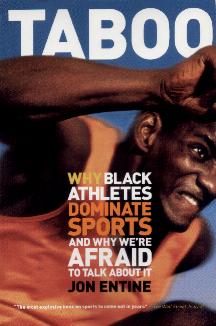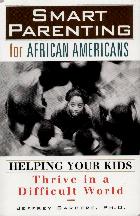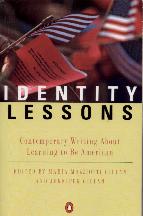

Menstuff® has compiled newsbytes on the multicultural issue. Menstuff makes no representation as to the accuracy of information transmitted herein.
|
|
|||||
|
|
|
 |
 |
 |
|
Books
Videos (Circle
of Recovery, Color
of Fear, Walking
Each Other Home & Stolen
Ground)
Related Issues: Talking With
Kids About Tough Issues
Periodicals
Resources
University of Michigan launches $16,000
Inclusive Language Campaign
"Such as: Illegal alien, ghetto and gypped," one Fox News anchor said.
Several derogatory words referring to a person's race or religion are on the list. Certain phrases are also discouraged, like "That test raped me."
It has launched a $16,000 Inclusive Language Campaign, or ILC.
As noted by the university, "The ILC raises awareness about the power of words, why certain language can be hurtful to others, and how to be more inclusive in how we speak and act as members of the Michigan campus community."
The College Fix chatted with a university spokesperson who said the program isn't regulatory, but educational -- which is pretty obvious point, considering America's "freedom of speech" amendment in the Constitution.
Regardless, it seems to be an important move for the university's image.
One example of some negative press: In October 2013, the university's chapter of the Theta Xi fraternity made headlines for a planned, then canceled "ratchet" themed party.
Note that ratchet is likely also looked down upon. The College Fix says students frequently hand out posters, some asking: "If you knew that I grew up in poverty, would you still call things 'ghetto' and 'ratchet'?"
It's not clear how the university financed the $16,000 campaign, but we do know the university has raised tuition rates for the past two consecutive years.
The University of Maryland also started a similar program in
2012.
Source: www.aol.com/article/2015/02/10/these-words-are-offensive-says-university-of-michigan/21141245/?cps=gravity_1967_-3371987337788356717
![]()
Kellogg Foundation Announces
$3 Million for Minority Men's Health
"There is a silent health crisis adversely affecting the well-being of men of color. They have less access to needed care and their health outcomes are worse than those of both white men and all women. Men are systematically excluded from public health insurance programs and men of color are least likely to have private coverage.
While historically men have a shorter life expectancy than women, mounting data shows men of color are most likely to suffer chronic conditions that, left untreated, cost billions more than simple preventative and primary care. More focus is placed on African American men as this is the group for which most data is available. The absence of data for other populations draws attention to the lack of knowledge and the need for further research on men's health."
Last year, the Kellogg Foundation also published "What About Men?
Exploring the Inequalities in Minority Health," which can be
downloaded at www.communityvoices.org/Uploads/31zt4iqkqymlsxrx2zobfgq4_20020730082714.pdf
Source: www.communityvoices.org/Article.aspx?ID=265
![]()
The Health Crisis of Black Men
As of 1999, Black men had an average life expectancy of 67.8 years. By comparison, White women lived an average of 79.9 years, Black women lived 74.7 years, and White men had a life expectancy of 74.6 years (Table 28). Said another way, 145,703 Black males died in 1999, compared to 139,361 Black females (Table 32).
For every leading cause of death, Black men lag behind Black women (all numbers are rates per 100,000 population):
|
The Nine Leading Causes of Death* |
|
Female |
|
|
Heart Disease (Table 37) |
|
|
|
|
Cancer (Table 39) |
|
|
|
|
Stroke (Table 38) |
|
|
|
|
Prostate/Breast (Table 30) |
|
|
|
|
Lung Disease (Table 42) |
|
|
|
|
AIDS (Table 43) |
|
|
|
|
Homicide (Table 46) |
|
|
|
|
Motor Vehicle Accidents (Table 45) |
|
|
|
|
Suicide (Table 47) |
|
|
|
Limited Access to Health Care
One reason why Black men's health lags in comparison to others is that they have less access to services.
Poor Black men are 6 times more likely to be uninsured as their White counterparts (4). 25% of Black males are uninsured, compared to 21.5% of Black females who lack health insurance. The main reason for this difference is Medicaid policies that favor custodial parents (usually women) over non-custodial fathers for insurance eligibility criteria.
Likewise, Black men in the 18-64 year age group are less likely to see a doctor in a given year than Black women of the same age (5). This is true in all income groups:
|
|
|
|
|
Poor |
|
|
|
Near Poor |
|
|
|
Middle, High |
|
|
On every measure, whether in comparison to Whites or to Black women, the health of Black men is in dire straits.
References:
1. Men's Health America: Latest Health Statistics Point to
Lifestyle Factors. January 31, 2003, Posting #668.
2. Men's Health America: Heart Disease: Major Disparities Still
Exist. February 20, 2003, Posting #684.
3. National Center for Health Statistics: Health, United States,
2002. Hyattsville, MD, 2002.
4. Agency for Health Care Policy and Research: Racial and Ethnic
Differences in Health. Rockville, MD: 1996, p. 9.
5. National Center for Health Statistics: Health, United States,
1998, Figure 43.
Segregated Neighborhoods Lead To Poor
Health
Over 235,000 Oregonians vote to Exclude
"Negroes"
Hitler's Black Victims: The historical
experiences of blacks in Nazi Germany
The purpose of the study, "Hitler's Black Victims," is to document and analyze that history in all of its complications and implications. This study not only chronicles what happened but also locates that history in the broader context of the global struggle against racism. The Nazis gave significant attention to their black "problem," and to dismiss the anti-blackness character of Nazism and the subjugation of its black victims is a historical whitewashing. The relentless goal of Hitler's National Socialist Workers Party was to create a racial state that was built on the fantasy of breeding "pure" Aryans while eliminating all others including Blacks! . Yet, the Nazis never reached agreement on whether to murder all Blacks and how.
This study is a multi-purpose effort to examine the nature and significance of "blackness" and "anti-blackness" in Germany and the occupied lands in the periods preceding and constituting the Nazi era. First, it expands our understanding of the Nazism and all the peoples that were its victims. In the literally thousands of books on the period, Afro-Germans and other Blacks, and their experiences are notable only for their absence. In a similar vein, the wide number of museums dedicated to remembering the Holocaust and the horrors of Nazism also give little exposure, if any, to the black experience.
Second, this study demonstrates that Nazism's racial agenda was complex, fluid, and contradictory as opposed to simple, straightforward, and unproblematic. A perpetual debate in Nazi ruling circles over how to address Germany's black presence! extended the entire dozen years of Nazi rule and was never fully resolved.
A third purpose is to deepen our knowledge of the experiences of the African Diaspora. It was not Blacks from Europe who suffered at the hands of the Nazis, but also from the North America, the Caribbean, Africa and Latin America. Too often, these encounters of people of African descent are often forgotten.
Fourth, this study advocates the need to reconceptualize our framework on racism and see it as contingent and intersecting. The contingent nature of racism tells us that during Hitler's rule local preogatives, in some cases, overrode national and general racial orders. This can be viewed in the experiences of many Afro-Germans, who often lived isolated lives, where their individualized status allowed some of them a degree of protection that, in many instances, was enough for their survival.
The study is divided into four parts. In pa! rt one, the focus is on a number of the theoretical concerns that are raised by exploring this relatively uncharted land. The purpose here is to examine the distinctiveness of the racialization process as it unfolded in Germany in relation to those of African descent.
Part two looks at the history of contact between the new German nation and people of African descent both in Africa and in Germany prior to Hitler coming to power. This includes reviewing German colonialism, and the European-wide discourse and controversy that arose after World War I regarding the placement of black troops in occupied Germany and the children they left behind. It also presents the unknown political efforts by Blacks to resist rising racism and growing Nazi attacks on working class organizers.
Part three examines in detail the lived experiences of Blacks under Nazism including: the policies expressed by Adolph Hitler and other Nazi le! aders on the question of Blacks in Germany; . the Nazi sterilization of Blacks including the ideological, political, and organizational links between eugenicists in Germany and the United States from around the turn of the century through the mid-1940s; . the experiences of Blacks in the many different types of imprisonment camps - internment, labor, prison, concentration, and extermination - created by the Nazis as well as reports of black massacres by German soldiers and civilians; . the use of black performers by Nazi propagandists in their films and other entertainment form; the Nazi failed but energetic effort at eliminating jazz, which was viewed as both black and Jewish making it totally unacceptable for mass consumption; the impact of black sports figures, such as Joe Louis and African American Olympic athletes, on the racial views of Blacks and Whites in both Germany and the US; . the military and non-milita! ry means by which Blacks fought Nazi racism including their participation in the formal resistance movements as well as individualized forms of defiance.
Finally, part four examines the contemporary nature of racism in Europe, in general, and, in Germany, in particular. This sector reviews the status and state of people of African descent in today's Germany, a presence that may number up to 500,000.
As the 2000 UN World Conference Against Racism, attacks on
immigrants, and rising Islamophobia deomonstrate, racism remains a
global problem. It can only be erased, as many have concluded, by
progressive and constructive polices that improve lives and change
attitudes. In part, this includes a new and inclusive understanding
of history and its legacy on our time. "Hitler's Black Victims" is an
effort to contribute to this cause.
Source: By Clarence Lusane, Ph.D.
www.lbr.nl/nieuws!
/boeklusane.html ![]()
10 Best Cities to have an Interracial
Relationship
Source: Mia For Latinos & the People
Who Love Them
10 Worst Cities to have an Interracial
Relationship
Source: Mia For Latinos & the People
Who Love Them
Understanding One Another's Differences
is the Only Real Anti-Terrorist Weapon We Have
We first heard about what was happening as we headed to Albany airport to catch a 12:30 flight to St Louis. We stopped at a photo lab on the way and a young woman at the counter told us, "There's been a terrorist attack on New York City." Our minds froze at what we thought was a bizarre joke. But she only stared back. "All planes have been grounded."
We continued to the airport as radio reports confirmed the worst. We were in shock, Judith in tears. How could this be happening in our world, the world we've built and trust?
At Albany International, the wide passageways leading to the gates were empty. We watched reports from CNN on the overhead television and talked about our sense of powerlessness. There didn't seem to be anything we could do. And we knew that most people would be feeling the same way. It wasn't until our drive home that it became clear that there was much that could be done by each one of us.
We all live, to one degree or another, with a fear and distrust of those who are not like us. We justify our fear by exalting what we believe is right and treat it as the absolute truth. Then we feel free to criticize those who are different, cast out those who are different, imprison those who are different, and, ultimately, kill those who are different, without ever questioning what we are doing. Get rid of the threat, that is all that counts.
At the root of all violence is the inability to tolerate differences. And it is true for every one of us everyday.
When we feel contempt for someone who dresses differently than we think is appropriate.
When we snipe at someone because they have different values than we do.
When we talk behind someone's back or curse someone who we think is driving too fast or too slow.
Those are examples of little emotional terrorist attacks, both against other people and against ourselves because they are a denial of what is inescapably obvious about this life. We are all unique. We were created to be different from one another in many ways.
When we attack each other because we are different, we attack the very source and foundation of our existence. The abundant variety so evident in this life is proof of the glorious and unlimited creativity that we are all a part of. When we presume to reduce everything and everyone to our singular point of view we insult God, the Creator, the Divine Spirit. When we insist that our way is the only way and those who are not like us must be destroyed, we set ourselves up as the ultimate authority and that is madness. The same madness that drove the terrorist's responsible for yesterday's carnage and devastation.
So what can we do to meaningfully exercise our individual power and help the world convert this force of terror into an energy for community and co-existence? We must all learn to recognize, value and appreciate the differences between us.
As a walking, talking prayer, a daily act of practical spirituality, make a commitment that when you catch yourself negating someone because he or she is different from you, you will stop yourself and ask what about the other person are you afraid of? What do you believe about yourself and/or the other person that leads you to feel threatened so that you have to, in some way, wipe the other person out? It is from a lifetime accumulation of the insults and injuries of emotional abuse that terror and rage retaliates with a need to kill.
Understanding one another's unique ways is the only real anti-terrorist weapon we have.
Fighting force with force is a necessary regulator. It is imperative that those responsible for this attack be found and summarily punished. No people can permit such ruthlessness to continue in any form.
However, if civilization is to ever bring an end to such indiscriminate violence, we must all learn to open ourselves to listen to the other, those people who are not like us. We have to do so with caution and self-protection. There is no need to be naive. But when we allow that the other person's reality is as meaningful for her or him as ours is for us, we set the basis for transformative dialogue, an opportunity for real listening, real understanding, and real communion of our differences. Once that opening is available, then it may take time, but if we are sincere, we will come to know one another, be changed by one another, and grow through one another toward a mutual well-being that is not possible any other way. Only then can there be the peace we all so deeply desire and pray for.
Source: Judith Sherven and James
Sniechowski, www.thenewintimacy.com
![]() or jksjes@hotmail.com
or jksjes@hotmail.com
Do the Lives of Black Men Count for
Less?
Mr. Collegiate African American
Scholarship Program
Dipsy - The 'Tubbie most likely to
succeed
![]() Call Me Negro, Black or Afrian-American?
Call Me Negro, Black or Afrian-American?

Nothing will change until we demolish the we-they mentality. We
are human and therefore all human concerns are ours. Sam Hamill